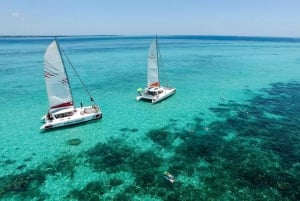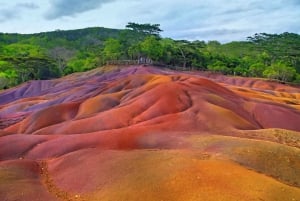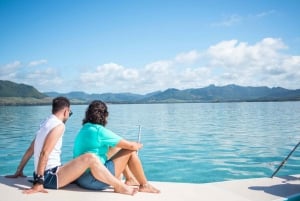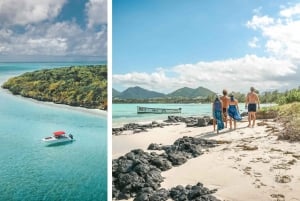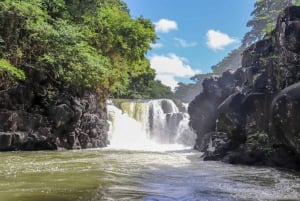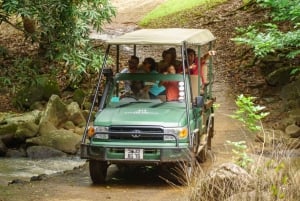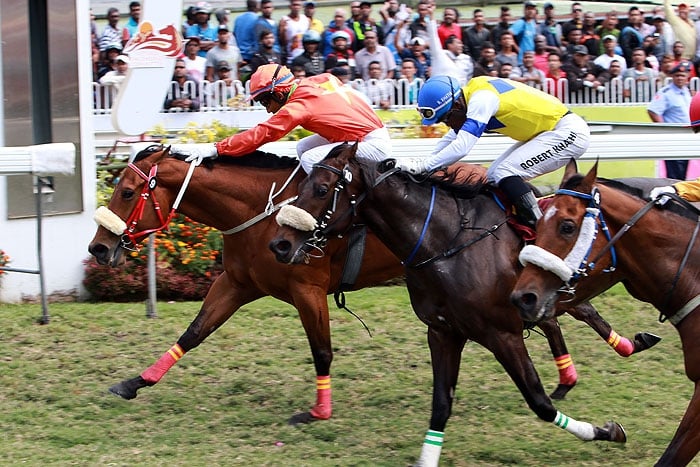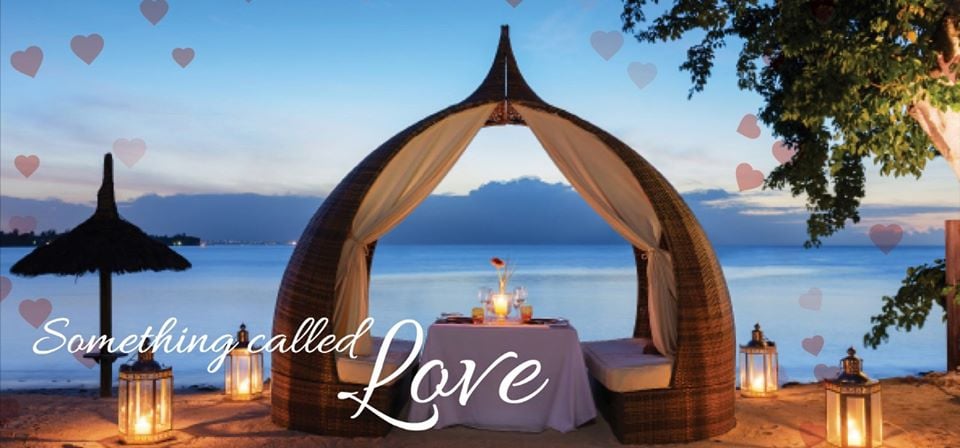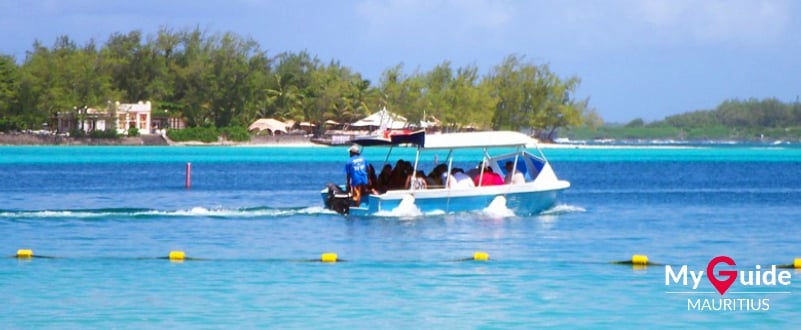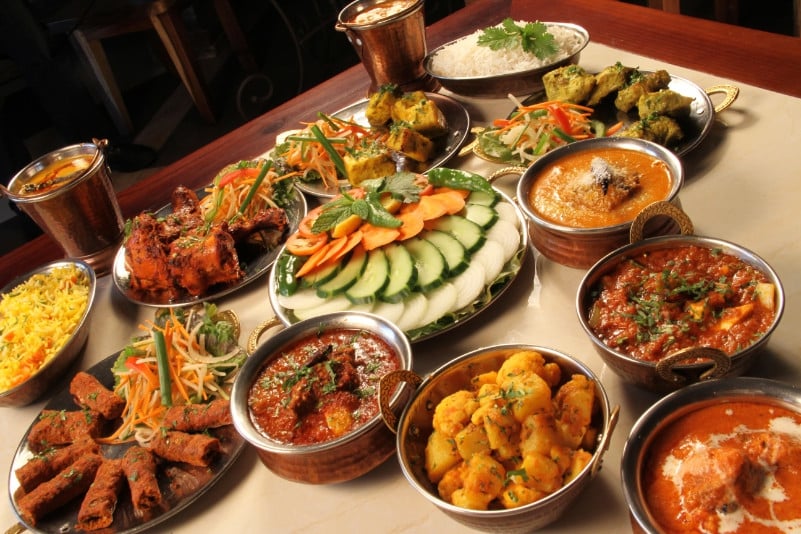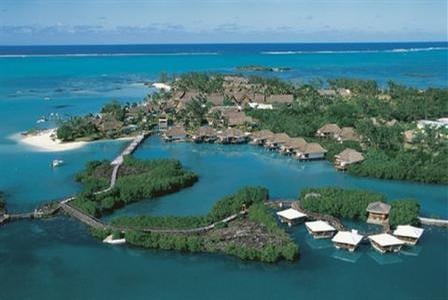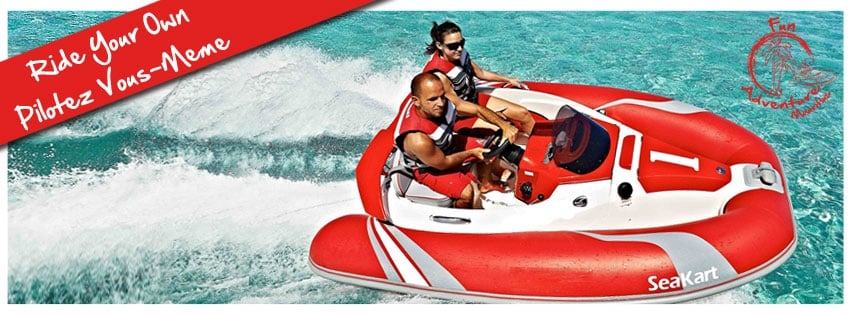History of Mauritius
Mauritius was colonized by the Dutch, the British, and the French and it became independent recently in 1968
Mauritius though being a small island in the Indian Ocean and being a tiny point on the world map, has a very rich history. The first historical evidence of the existence of an island now known as Mauritius is on a map produced by the Italian cartographer Alberto Cantino in 1502. From then on, it has been discovered, visited and colonized by a whole number of different countries.
Going through Mauritius history will help you understand its present blended culture and identity. Mauritian Creoles trace their origins to the plantation owners and slaves who were brought to work in the sugarcane fields. After slavery was abolished in 1835, indentured labour was brought to Mauritius namely Chinese, Malay, African and Malagasy labourers, but ultimately, it was India which supplied the much needed laborers to Mauritius. Indo-Mauritians are descended from Indian immigrants who arrived in the 19th century via the Aapravasi Ghat in order to work as indentured laborers.
Arab Sailors in the 10th Century
Mauritius was first discovered by Arab sailors in the 10th century, who named it Dina Arobi (which means Desert Island in English). It’s difficult to know the exact date when this happened due a lack of documentary evidence from this period. They did not seem interested in the island since they left it uninhabited. It is also known that they were followed by tribes of Malays, but very little information is available about that period.
The Portuguese in 1507
After the Arabs and Malays, Mauritius was visited by the Portuguese between 1507 and 1513. However no permanent colony was established on the island by the Portuguese. Mauritius as well as Reunion island and Rodrigues were encountered by chance during an exploratory expedition of the Bay of Bengal (It is the largest bay in the world with waters flowing straight out of the Himalayas through Bangladesh, it is bordered by Bangladesh to the North, Myanmar to the East, Sri Lanka and India to the west) by the ship Cirne.
The expedition ran into a cyclone and was forced to change course and that is how Réunion island was sighted by the captain Diogo Fernandes Pereira, on 9 February 1507. At the same time Mauritius as well was discovered and the Portuguese seaman named it “Ilha Do Cerne” (Island of the Swan). Five years later, the 3 islands (Mauritius, Rodrigues and Reunion) were visited by the Portuguese Captain Dom Pedro de Mascarenhas. The Group of islands, were then named Mascarenes after him. Today the group of islands is still known as the Mascarene Islands.
However, the Portuguese took no interest in these isolated islands. They were already established in Asia in Goa, on the island of Ceylon (now Sri Lanka) and on the Malaysian coast. The Portuguese navigators preferred to use the Mozambique Channel to go to India as their main African base was in Mozambique. The Comoros at the north proved to be a more practical port of call.
The Dutch in 1598
In 1598, a Dutch expedition consisting of eight ships, sailing towards the Indian sub-continent faced bad weather conditions after passing the Cape of Good Hope (It is a rocky headland on the Atlantic coast of the Cape Peninsula, South Africa). As a result they lost their way and the fleet were separated in 2 groups. Three of them succeeded in sailing to the northeast of Madagascar. The remaining five ships found their way together and sailed in a southeasterly direction under the orders of Admiral van Warwyck. They came into view of Mauritius on the 17st of September, and on 20th September, they entered a sheltered bay in the South East of the island which they named "Port de Warwick". It is better known nowadays as the village of Grand Port. They landed on the island and named it "Prins Mauritz van Nassaueiland," after Prince Maurits (the Dutch Stadtholder known also as Maurice of Nassau - Prince of Orange). The island’s name Mauritius is thus a legacy of the Dutch.
The island was not permanently inhabited for the first forty years after its discovery. The Port de Warwick was used by the Dutch as a stopover after long months at sea. They visited it also for its raw materials such as ebony and wild animals like the famous Dodo, pigs, goats and tortoises. Dutch presence on the island largely contributed to the extinction of the endemic bird Dodo and giant tortoise populations as they used them for food.
In 1606, two expeditions, consisting of eleven ships and 1,357 men under the orders of Admiral Corneille, came to Mauritius but this time through another bay, in the North West of the island. They found a great number of terrestrial tortoises there, thus they named it "Rade des Tortues" (Tortues means tortoises in English). From that date, Dutch sailors shifted their port from Port de Warwick to Rade des Tortues which is well known today as Port Louis.
In 1615, Governor Pieter Both who was coming back from India through the Indian Ocean route died during a shipwreck. After this event the Dutch sailors started considering the route as cursed and tried to avoid it. During that time, the British and the Danes began making incursions into the Indian Ocean. They landed on the island freely and cut the ebony trees which were available everywhere on the island and took the precious wood.
Dutch colonization (1638–1710)
In order to prevent the French and the British from occupying the island, the Dutch established the first permanent settlement in 1638. Cornelius Gooyer was appointed as the first Governor. The Dutch built a square wooden fort which they named Fort Frederik Hendrik with bastions and cannons at each corner to protect their harbour. Nowadays there is a museum named after Frederik Hendrik in the village of Grand Port which recounts the early Dutch occupation of the island.
Gooyer’s role was to develop the commercial potential of the island; send ebony trees and wood to Batavia and Holland, to find Ambergris (used for producing expensive perfumes), produce food and tobacco, rear cattle for settlers, supply fresh food and products for the Dutch ships travelling along the Indian Ocean route. But he did not succeed, and was thus recalled. His successor was Adriaan Van der Stel, who brought with him various seeds and fruits including sugar cane saplings. He also brought along rabbits, sheep, geese, ducks, pigeons and stags, which multiplied over the years. They were sources of fresh provisions to passing ships. Van der Stel began to develop the export of ebony wood. In order to cut down the ebony trees for exportation, he brought Malagasy slaves to the island. During the period of 3 years where the Governor Van Der Stel was on the island, he developed the agriculture: cultivated rice, indigo, tobacco and cane.
In 1644, the islanders faced many months of hardships, due to delayed shipment of supplies, bad harvests, and cyclones which damaged the crops and the fort. During those months, the colonists could only rely on fishing and hunting for food. Van der Stel was then transferred to Ceylon (now Sri Lanka). Numerous governors came afterwards; Jacob van der Meersh, Reinier Por, Dirk Jansz Smient, George Frederik Wreeden, Hubert Hugo, Johannes Lamotius, Roelof Diodati, Abraham Momber Van de Velde.
The continuing hardships affected the commercial potential of the island and a pullout was ordered in 1657. In 1664, a second attempt was made, but continuous hardships such as cyclones, droughts, pest infestations, lack of food, and illnesses finally took their toll, and the island was definitively abandoned in 1710.
The French in 1715
Once the Dutch withdrew, Mauritius remained unoccupied for some years. The French, who were already trying to control the Indian Ocean entered the island in 1715. Guillaume Dufresne d'Arsel landed and took possession of this port of call on the route to India. The island was seen important, from a strategic point of view to control Madras and other parts of India, which was colonized by the British. The island was named "Isle de France". The French brought infrastructure, agriculture, and industry to the island.
In 1721, the French started settling on the island with Denis Denyon being assigned as governor. People came from Bourbon Island (which is now known as Reunion island) and from France to settle on the island in Port North West (Port-Louis) and Port South East (Grand Port). Acres of land were cleared and tobacco maize and rice were planted. But due to the island’s climate, they were soon destroyed by cyclones
.
However, it was only as from 1735, with the arrival of the French governor, Bertrand Mahé de Labourdonnais, a great sailor and trader, that "Isle de France" started developing effectively. He transferred the headquarters of the island from Port South East to Port North West. Mahé de La Bourdonnais established Port Louis as a naval base and a shipbuilding centre. Under his governorship, there have been the construction of numerous roads and buildings; a number of which still stand today: part of Government House, the Chateau de MonPlaisir at Pamplemousses and the Line Barracks. He encouraged settlers to cultivate their land and obtained slaves from Mozambique to help them.
Thus sugarcane, wheat, rice, cotton, coffee and indigo, were planted. The first factory was built in Pamplemousses. To carry out public works and to cultivate more lands, Indian sailors and artisans were brought to the island. These many developments transformed Isle de France into a prosperous colony. It was under the administration of the French East India Company which maintained its presence until 1767.
In 1767 the crown took over the island from East India Company, and Governor Dumas and Intendant Pierre Poivre became the new administrators. Pierre Poivre was a great botanist and has brought pepper and cinnamon plants from Moluccas and other spices from Philippines to the island. Under their rule roads were straightened and widened, and many stone houses were built in Port-Louis (few still exist today).
In 1806 the Governor General, Charles Mathieu Isidore Decaen, created the city of Mahébourg, named in honour of Mahé de La Bourdonnais. It was originally known as Bourg Mahé. From that year until 1810, the island was in charge of officials appointed by the French Government, except for a brief period during the French Revolution, when the inhabitants set up a government virtually independent of France.
The British in 1810
After the French being defeated in India, Britain became the most powerful nation in the Indian Ocean. The British made several efforts to conquer Mauritius, but these efforts were each time deflected by the French. The British’s main focus in captivating Mauritius was to protect their main sea route from England to India from the French. It was only during the Napoleonic Wars that the British succeeded in invading Mauritius in 1810, they landed in Cap Malheureux with a greater number of forces. The French who were outnumbered had to surrender. The British were thus able to capture the island merely six months after they were defeated by the French during the Battle of Vieux Grand Port.
Their possession of the island was confirmed four years later by the Treaty of Paris (1814). In order to gain the support of the locals the British promised to them that their customs, laws, language and culture will be respected, thus French institutions, including the Napoleonic code of law, were maintained. The French language was at that moment still used more widely than English.
Ile de France was renamed Mauritius. Robert Farquhar was appointed as the first English Governor of Mauritius. He made rapid social and economic changes. In August 1833 the law of abolishing slavery was passed by the British parliament and came into force in Mauritius in 1835. The abolition of slavery had important repercussions on the socio-economic and demographic fields. Since slaves could no longer be used, the local planters turned to India from where they brought a large number of indentured laborers. They were brought to work in the sugar cane fields. They were also skilled workers and artists. There was a tremendous change in the structure of the population on the island, as the immigrants and colored people modified the political structure in the 19th century. At the end of the 20th century, economic reforms were introduced in the country which helped in the development of the island. The credit for building the airport at Plaisance and the Vacoas meteo station goes to the British, who tried to change the face of the island during the World War II. The first underwater telephone cable in Mauritius was placed in 1901, connecting Australia to South Africa.
On the constitutional plane, the Council of Government was first established in 1825, a new Council of Government including 10 members elected on a restricted franchise was brought in 1886. In 1933 the Constitution was significantly amended. But the Constitution was still restricted to persons within a certain income bracket and to property owners. In 1948, after years of negotiations for a more liberal Constitution, a major breakthrough occurred when franchise was extended to all adults who could pass a simple literacy test. The Council of Government was replaced by a Legislative Council composed of 19 elected members, 12 members nominated by the Governor and three ex-officio members. General elections were held in August 1948 and the first Legislative Council met on 1st September 1948.
Mauritius was colonized by the Dutch, the British, and the French and it became independent recently in 1968
Conflicts arose between the sugarcane labourers and the owners in the 1920s, leading to several deaths. Following this, the Mauritius Labour Party was founded in 1936 by Maurice Cure based on the British Labour Party to safeguard the interest of the labourers. When Cure was forced to step down as President of the Labour Party in 1941, Anquetil took over and tried to gain the support of the port workers. After his death, Guy Rozemont took over the leadership of the party until his death in 1956 at the age of forty-one. The arrival of Seewoosagur Ramgoolam in 1958 marked an important step in the history of the party. He was in favour of an independent Mauritius within the Commonwealth of Nations. An independence campaign gained momentum after 1961, when the British agreed to permit additional self-government and eventual independence. Following the victory of the Labour Party in the general election of 1967, a constitutional agreement was made in Parliament. The coalition government, including the Labour Party, Independent Forward Block & Muslim Action Committee sealed the pact for Independence. Then the Labour Party, along with Veerasamy Ringadoo, Satcam Boolell, and Harold Walter, in coalition with the Muslim Action Committee led by Abdool Razack Mohamed and the Independent Forward Block led by the Bissoundoyal brothers, Lall Jugnauth and Anerood Jugnauth, pushed a motion in the Legislative Council to provide for independence. In 1968, the people of the island were able to secure independence from the colonial British rule. Sir Seewoosagur Ramgoolam became the first prime minister of Mauritius and held the reins of the country until 1982.
Mauritius became a Republic in 1992
In December 1991, the Constitution was amended to make Mauritius a republic within the Commonwealth. Mauritius became a republic on 12 March 1992, with the last governor general, Sir Veerasamy Ringadoo, as interim president. He was succeeded by Cassam Uteem on 30 June 1992.




